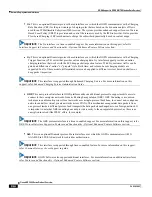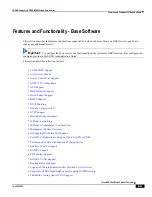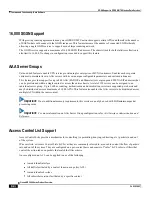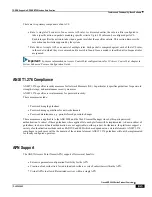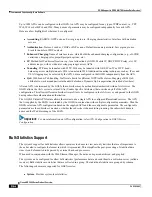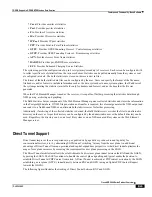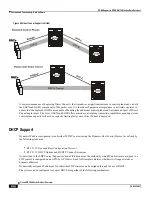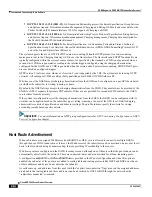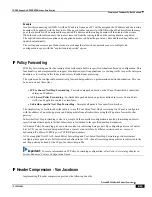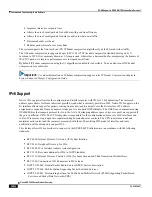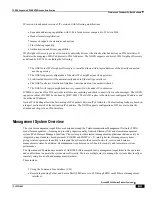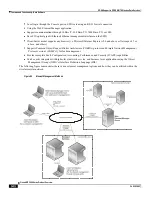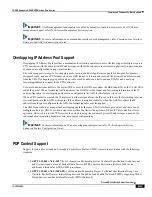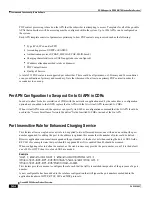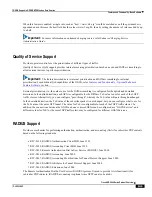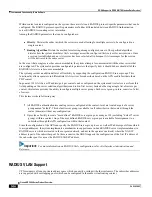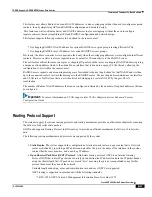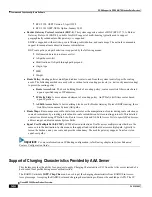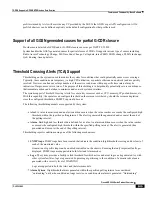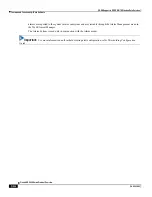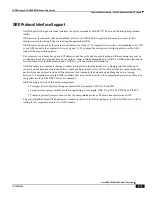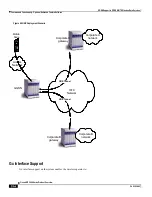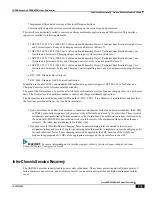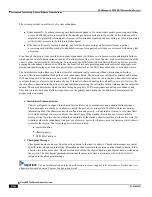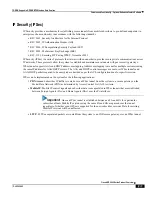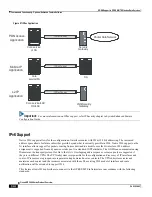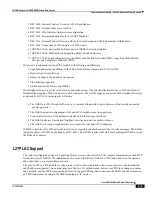
GGSN Support in GPRS/UMTS Wireless Data Services
▀ Features and Functionality - Base Software
▄ Cisco ASR 5000 Series Product Overview
OL-22938-02
PDP context processing is based on the APN that the subscriber is attempting to access. Templates for all of the possible
APNs that subscribers will be accessing must be configured within the system. Up to 1024 APNs can be configured on
the system.
Each APN template consists of parameters pertaining to how PDP contexts are processed such as the following:
Type (IPv4, IPv6, and/or PPP)
Accounting protocol (GTPP or RADIUS
Authentication protocol (CHAP, MSCHAP, PAP, MSID-based)
Charging characteristics (use SGSN-supplied or use configured)
IP address allocation method (static or dynamic)
PDP Context timers
Quality of Service
A total of 11 PDP contexts are supported per subscriber. These could be all primaries, or 1 Primary and 10 secondaries
or any combination of primary and secondary. Note that there must be at least one primary PDP context in order for
secondaries to come up.
Per APN Configuration to Swap out Gn to Gi APN in CDRs
In order to allow for better correlation of CDRs with the network or application used by the subscriber, a configuration
option has been added to the GGSN replace the Gn APN with the Gi (virtual) APN in emitted G-CDRs.
When virtual APNs are used, the operator can specify via EMS or a configuration command that the Gi APN should be
used in the ―Access Point Name Network Identifier‖ field of emitted G-CDRs, instead of the Gn APN.
Port Insensitive Rule for Enhanced Charging Service
This feature allows a single host or url rule to be applied to two different addresses, one with and one without the port
number appended. As adding the port to the address is optional, this means that the number of rules could be halved.
Browser applications can sometimes appended the port number to the host or url when sending the host or URL fields.
RFC 2616 for example states that port should be appended but if it is omitted then 80 should be assumed.
When configuring rules to define the content, as the web browser may provide the port number, even if it is the default
one of 80 for HTTP, then two of each URL are needed.
Example
This feature provides a means to configure the rule such that the traffic is matched irrespective of the presence of a port
number.
A new configurable has been added to the rulebase configuration that will ignore the port numbers embedded in the
application headers of HTTP, RTSP, SIP, and WSP protocols.
Summary of Contents for ASR 5000 Series
Page 1: ......
Page 26: ......
Page 48: ...New In Release 10 0 SCM Features Cisco ASR 5000 Series Product Overview OL 22938 02 ...
Page 50: ......
Page 58: ......
Page 68: ......
Page 126: ......
Page 138: ......
Page 146: ......
Page 218: ......
Page 236: ......
Page 356: ......
Page 374: ......
Page 422: ......
Page 496: ......
Page 572: ......
Page 654: ......
Page 700: ......
Page 726: ......
Page 784: ......
Page 816: ......
Page 844: ......
Page 906: ......
Page 926: ......
Page 942: ......
Page 943: ...Cisco ASR 5000 Series Product Overview OL 22938 02 Chapter 30 Technical Specifications ...
Page 966: ......
Page 972: ......

